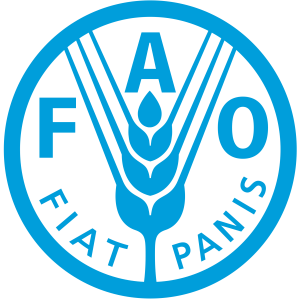The United Nations Food and Agriculture Organization (FAO) today presented the progress made in Latin America and the Caribbean regarding the targets set in the Kunming-Montreal Global Biodiversity Framework of the Convention on Biological Diversity, which outlines concrete goals for the protection of global biodiversity.
The presentation took place at the 16th Conference of the Parties (COP) on biodiversity, held in Cali, Colombia, gathering around 12,000 delegates from nearly 200 countries, including a dozen heads of state and 140 ministers, to conserve biodiversity and secure a sustainable future for all forms of life on the planet.
“Significant progress has been made in the region, integrating biodiversity considerations into policies and strategies at all levels. This compendium shows how FAO projects, financed by the Global Environment Facility (GEF), have made a difference. Even before this biodiversity framework, we have been working energetically towards Better Production and a Better Environment, promoting Better Nutrition and a Better Life, leaving no one behind,” explained María Mercedes Proaño, FAO’s Climate Finance Officer, who gave the presentation in Cali.
The progress was presented through a compendium of publications highlighting the work over the past decade (2013-2023) across more than 150 actions in 20 countries in Latin America and the Caribbean on biodiversity. These publications analyze initiatives supported by FAO and funded by the Global Environment Facility (GEF).
The achievements include eliminating obsolete pesticides, reducing costs, protecting the environment in fisheries, and converting thousands of hectares into protected areas, among other initiatives.
In Ecuador, in line with ‘Goal 01: Plan and manage all areas to reduce biodiversity loss,’ the climate-smart livestock project was developed, allowing progress in five provincial development and land-use planning plans.
In the Caribbean, under ‘Target 07: Reducing pollution to levels not harmful to biodiversity,’ 319 tons of obsolete pesticides were eliminated, including persistent organic pollutants and polychlorinated biphenyls, an amount similar to the weight of approximately eight Boeing 737 aircrafts.
In Brazil, aligned with ‘Target 08: Minimize the impacts of climate change on biodiversity and build resilience’, a reduction of over 23% in fuel consumption in fishing was achieved thanks to modified fishing nets, leading to lower pollution and costs, with the potential to obtain blue economy credits for reduced emissions.
In Colombia, aligned with ‘Target 10: Enhance biodiversity and sustainability in agriculture, aquaculture, fisheries, and forestry’, the Biocaribe project intervened in more than 12,000 hectares for buffer zones of protected areas, representing an area similar to 35 times Central Park in New York; and certifying more than 3,000 hectares through participatory systems, similar to 625 times the Zócalo of Mexico City.
In Mexico, in line with ‘Target 14: Integrate biodiversity into decision-making at every level’, the Agrobiodiversity project proposed the definition of native maize for the Federal Law to promote its cultivation and protection. Additionally, the focus on agrobiodiversity was included in Mexican official standards to promote healthy and sustainable diets.
FAO is currently working with countries in the region to develop projects aimed exclusively at achieving the biodiversity goals for GEF-8 (the eighth replenishment cycle), totaling USD 37.6 million, in addition to the USD 60 million in proposals that include biodiversity and address these goals.
..............................................................
This story was first published by FAO Regional Office for Latin America and the Caribbean.





